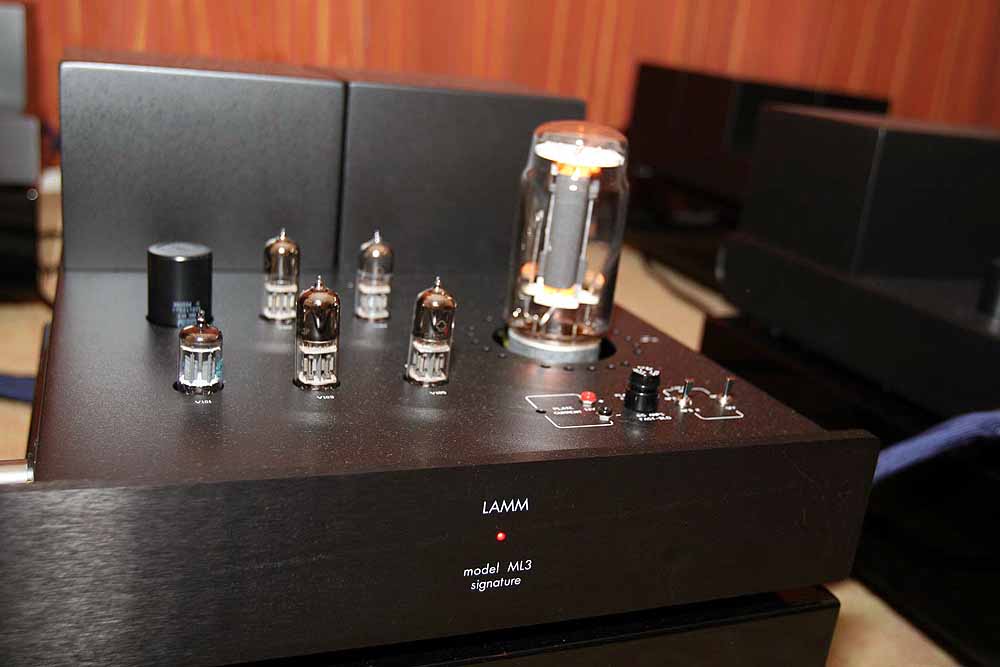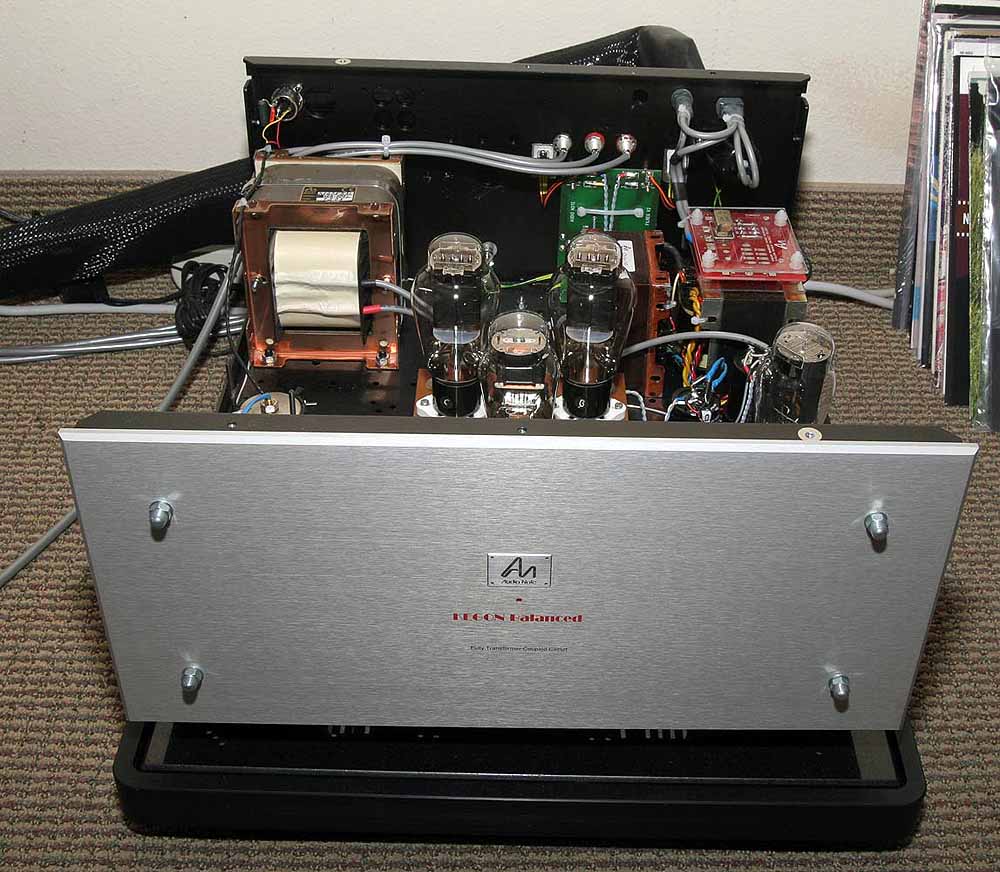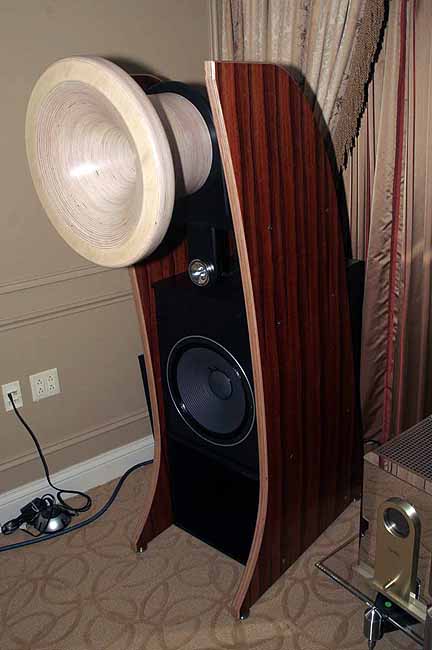One of the questions we get asked a lot by people is “Did we hear anything great” that they should know about… that might affect their purchase plans over the next few system upgrades.
Thinking back to other shows, we, like most audiophiles we talk to, only find a couple or three things we think change the high-end landscape at each show.
On the plus side we have
Amps:


the $139K Lamm ML3 and the $85K Audio Note U.K. Kegon Balanced. There are now two more ultra-fidelity amps added to what is still only a handful of ultra-fidelity tube amps.
Since these two brands, which we happily carry and use on a day to day basis in multiple systems [:-)], already had most if not all of the amps in this category to start with [Kondo is great, but their purpose is very different, and somewhat inaccessible to the American taste] – they have just solidified their reputation even more.
And, with the proliferation of so many newcomers, with amps from $30K to the sky, having brands with a reputation for building world-renowned amps for more than a few months should appeal the the buyer who wants to get their monies worth.
What does this mean for people with, uh, restraint? While the Kegon Balanced is like a 300B Gaku-On [the Gaku-On uses 211 tubes], Audio Note does use lots of the same technology in their new P4 Balanced [which is MUCH less expensive – the exact price of which is waiting on us to finish staring in horror at the British pound / U.S. dollar charts].
It is very unlikely that Lamm will come out with a ML2Prime or something between the ML2.1 and ML3 [unless everybody clamors for it – and even then, likely not] but the ML3 does increase the worthiness and renown of the brand [not that they needed it – so this is not major].
Speakers
Let’s just go through them quickly and see which ones merit further discussion vis-a-vis people changing their buying decisions [as opposed to being pleasantly surprised that their previous choice is now sounding better than ever]. The $45K or so Audio Note AN/E SEC Signature now with high-efficiency hemp driver and high-resolution AlNiCo tweeter, The $16?K Classic Audio Reproductions with Field Coil midrange, … well, then we have the usual suspects: Hansen, EPOS, Audio Machina, Sunny Cable.
But new this year we have the Cessaro in the Zanden room [first time at a U.S. show], and new Kharma, Marten, Acoustic Zen speakers [are they trying to drive us nuts?]
For Kharma the new 3.2.2 [introduced at RMAF] and the new Galileo Exquisite [maybe I now will learn how to spell Galileo] make those who had the decision to make between going with the smaller 3.2 and the larger Midi Exquisite much more difficult – which these two speakers filling in that gap. For prospective Marten purchases – the new Form series competes with their Miles III [choose Form’s if you prefer lively and forgiving over accuracy and transparency, is the way I look at it]. And Acoustic Zen, with their new six foot tall statement speakers [I think these are still in prototype – but they sound ready to me and they are full range and somewhat forgiving].

The Cessaro – it is so much easier to talk about things we don’t sell, mostly because I want to be completely accurate about the pluses and minuses about the things we DO sell, and the things we don’t… well, I can just give kind of a general recommendation – that it ‘looks good’ at first blush [or second or whatever]. So, uh, yeah, the Cessaro horn speakers sounded good within the constraints of a room that had giant speakers and no room treatment. The highs were pure, the midrange was decent and the bass was attached and not under- or overwhelming – very much that ‘big horn sound’ done correctly, to my way of thinking, so that it sounds like the music other speakers make, just bigger and more relaxed and more dynamic. To be explicit: these sounded a lot like Acapella speakers – the sound quality [and appearance :-)] of this particular pair roughly falling between their Campanile and Triolon models. I say roughly because I only heard a few songs here – it was just a first blush.
Cables?
We are still staggering under the blow that the Nordost ODIN has delivered to our expectations of what cables can do. Specifically the interconnects. They rock.
Turntables?
Well, besides the Audio Note TT3 Reference [which we will post LOTS about over time here], the other tables I did not hear – and many I did not see. The big Transroter – seen and not heard. The, geez I do not know their names off the top of my head – the table in the Sanders room and the one on the 7th floor of the Venetian with a granite platter – I did not even see, much less hear [so the names won’t do me any good anyway].
On the minus side, we have

1. the commoditization of what was the hallowed [by some, admit it] Continuum turntable. Being heard, as it was, in so many systems, and many that were not WOW systems, the hype bubble surrounding the Continuum has leaked a little of that hot air.
2. the proliferation of new expensive amps and speakers from companies, new and old, that have never built one of these things before – and whose core competency, whether it be cables or whatever, is being neglected with respect to advances that one might imagine [or not] they could be making instead.
What does this mean? More choices and more confusion for the consumer. The beginning of the end of a number of companies [well, it does portend big problems in other industries, anyway, usually to do with money squandered and focused competition grabbing market share].
3. The [growing?] disrespect some exhibitors have for the sound. Maybe it is just more obvious now. But with iPods and sound cards and laptops and cobbled together media servers going into so-so DACs – many exhibitors just did not care if the megabuck things they were supposedly trying to get dealers to sell sounded good or not.
4. In a similar vein – the media server craze. The number of media servers in the prototype stage at CES was amazing.
In the early days of the PC, say 83 to 95, it was obvious that the PC would kill workstations. So some people used the PC [DOS and Windows] to do their work for all those years, even though it was inferior [and still is to some degree]. People may not remember, but there was a Win286, Win386, Windows 3.0, 3.1 and finally 95 that almost really worked for the first time. I know because I was one of those people and I own all of these.
Again, we have high-end audio companies spending their research dollar on this stuff – instead of better sound – when at the end of the day, Amazon, for example, can just keep your music server on the net for you, never any risk of hard disk failure, available at your friends house, in your car, on your cell phone, wherever – and you just have to click on ‘buy’ to have any track or CD added to your server instantly. All these hardwired incompatible GUIs, having to manage a physical CD or inferior MP3, worrying about format changes as they improve download speeds and the MP3 format… it will all be done for us. But hey, maybe one of these companies will beat Amazon and Microsoft and Apple – I certainly would be over-joyed to see it. But…
Hope all this was more or less in English – cause I need to boogie. I’ll re-read it later. Or get Neli to do it 🙂
[Oh, but I should add photos too…]




